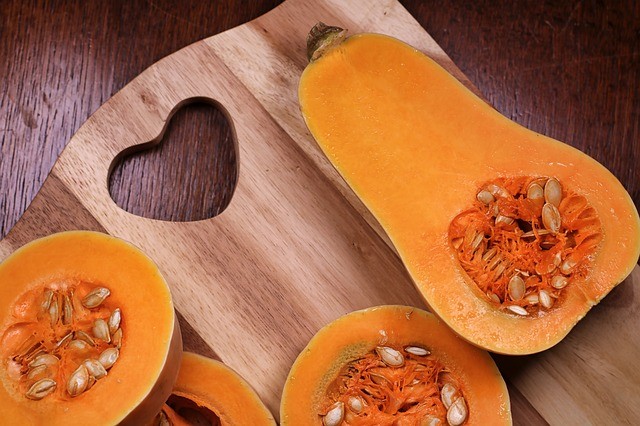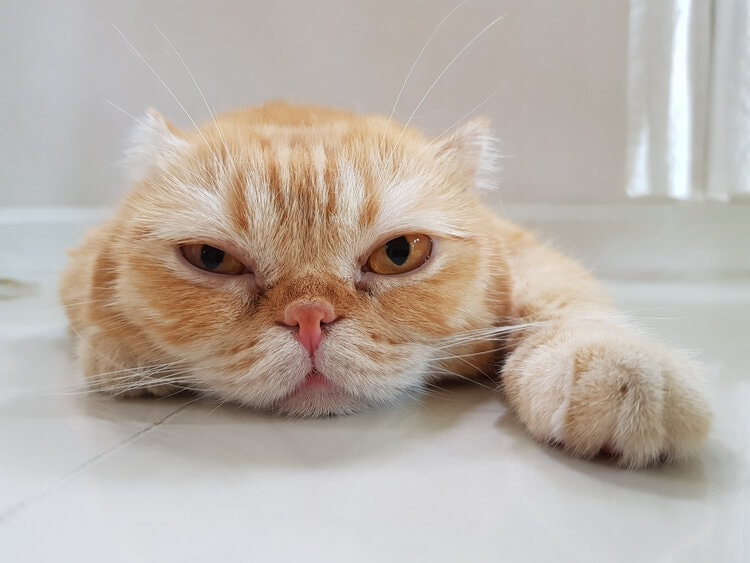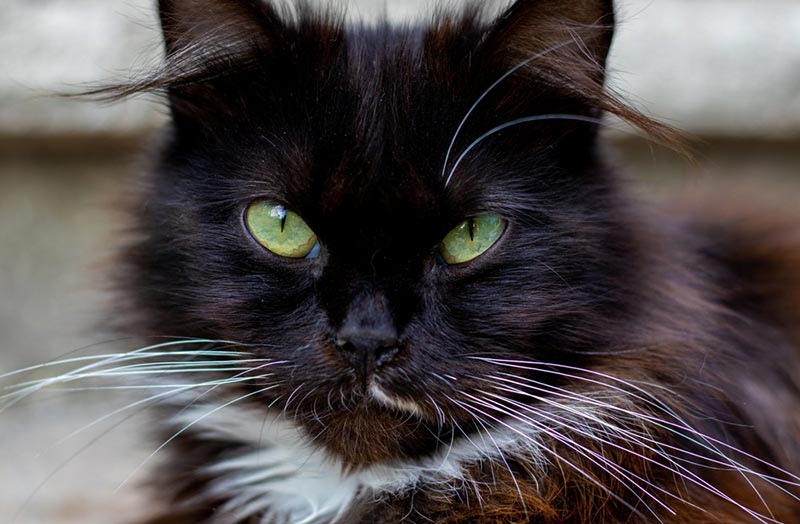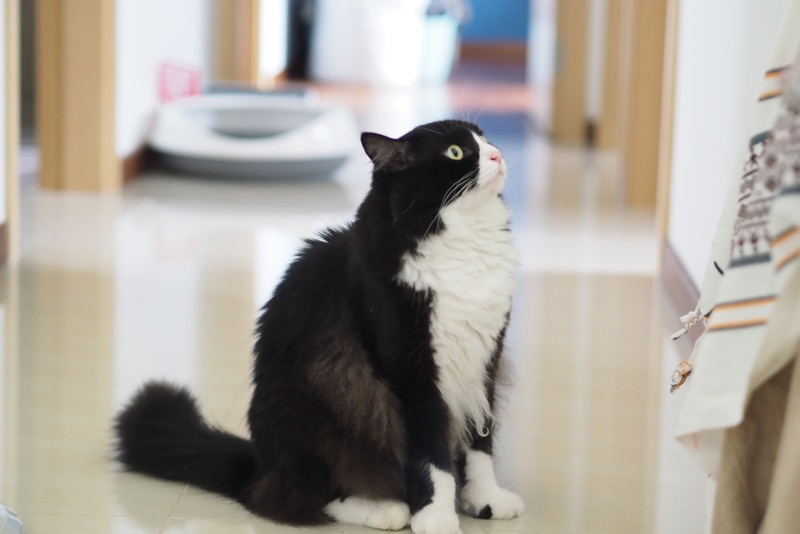Can Cats Eat Peas? Vet-Reviewed Nutrition Facts & FAQ

Updated on

If your cat has ever sneaked a bite while you’re preparing dinner or harvesting fresh vegetables from the garden, you might be wondering whether cats can eat peas. The short answer is yes, cats can eat peas. In fact, many commercial cat foods include peas as an added ingredient.
As with any new food, though, if your cat has never eaten it before, be sure to consult with your vet before adding peas to your cat’s diet. In addition to doing that, here is everything that you need to know about cats and peas.
 Are Peas Good for Cats?
Are Peas Good for Cats?
Peas have some health benefits for cats, including a boost in micronutrients like vitamins, lutein, zeaxanthin, and choline. Peas also contain fibe,r and can be a useful addition to your cat’s diet. They are low in calories, making them great snacks or treats for cats that struggle with maintaining a healthy weight.
There are many varieties of peas to choose from. Feel free to select from snow peas, garden peas, or sugar snap peas to feed your cat. As long as they aren’t too hard for your cat to chew, you can even feed frozen peas to your cat as crispy, cool treats.
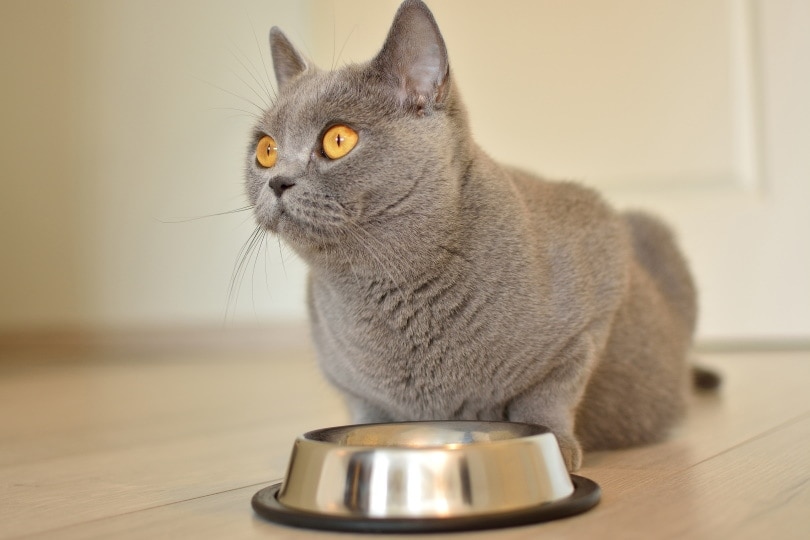
How to Safely Feed Peas to Cats
It’s important that when feeding peas to your cat, you stick to fresh or frozen varieties. Avoid canned peas. It’s also recommended to remove peas from their pods before giving them to a cat. While pea pods can be safely digested by cats, they are choking hazards. Some cats can eat them, but it’s best to err on the side of caution and only feed shelled peas to your cat.
These legumes can provide your cat with some nutrients and be offered as low-calorie snacks. That said, while peas do contain protein, it’s important to remember that cats are obligate carnivores. The majority of their diet should come from meat-derived proteins. Plant-based proteins are not complete and do not provide a cat with all the nutrients that they need. Even though cats can eat certain plant-derived foods, they really do not need them. In the wild, cats only ingest the plant and grain content inside their prey’s digestive system and nibble on some grasses occasionally.
 What Other None Meat Options Can Cats Eat?
What Other None Meat Options Can Cats Eat?
There are five veggie options that are safe to feed your cat. The benefits that they may provide include fiber and antioxidants. But remember that cats are obligate carnivores and do not really need vegetables in their diet.
1. Cooked Carrots
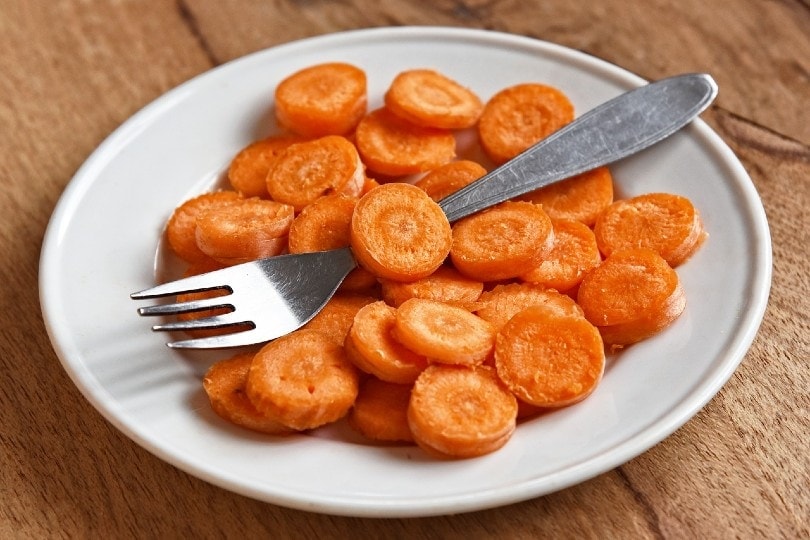
Carrots are packed full of vitamins, minerals, and beta-carotene. Be sure to cook carrots before feeding them to your cat, and chop them up into small, easy-to-chew pieces to avoid choking.
2. Broccoli
Steamed broccoli in your cat’s bowl is a great way to keep them from chewing on other, not-so-healthy green plants around the house. It has the added benefit of providing fiber to help your cat’s digestion.
3. Zucchini
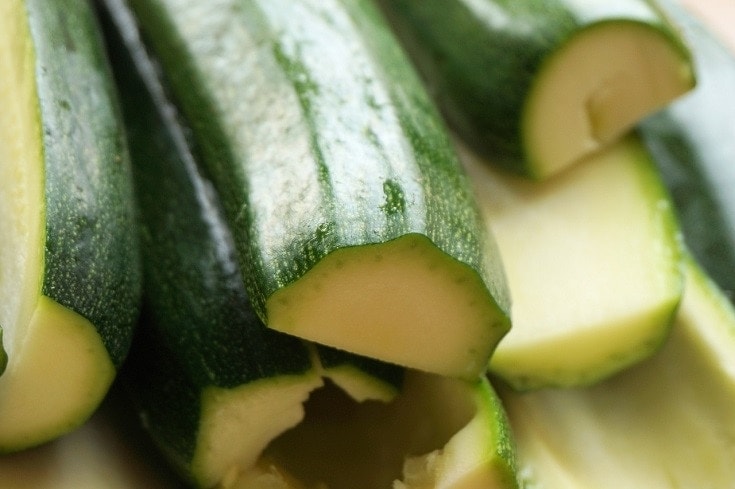
Zucchini is found in many commercial cat foods, and it can make for a healthy, low-calorie treat.
4. Green Beans
Green beans are good substitutes for traditional cat treats if your cat is overweight. They’re safe and don’t have many calories.
5. Winter Squash
Plain winter squash contains large amounts of fermentable fiber that can help normalize your cat’s bowel function and relieve any constipation or diarrhea that they may have.
 Components of a Healthy Feline Diet
Components of a Healthy Feline Diet
- There are many different recommendations for what comprises the best diet for your cat. Some become suddenly trendy, like raw foods or freeze-dried raw foods. Others promote organic ingredients or high-fiber foods. It can be hard to sort through all the available information. Regardless of the food that you choose, veterinarians recommend that 52% of a cat’s diet should be animal-based proteins. The rest should consist of fat and minimal carbohydrates. Overall, carbohydrates should make up no more than 12% of a cat’s diet.
- Different life stages have different nutritional needs. While some foods are labeled as “for all life stages,” these are usually foods that simply surpass the minimal requirements as stated by the AAFCO standards. Whether you’re giving your cat wet food or dry, a high-quality brand is essential.
- Beware of “gimmicky” labeling. These include “wild,” “primitive,” “all-natural,” etc. These words are used as marketing tactics to make certain brands of cat food stand out, but you should look at the food’s ingredients label to be certain that it is what it claims to be.
- While peas can be included in your cat’s food, be aware that they are a protein source, and a food that contains too much pea-derived protein is not the best option for a cat. Ideally, a food’s first three or four ingredients should be from animal proteins.
- Cats should avoid large amounts of carbs. These are essentially fillers in a cat’s diet. Too many carbs can lead to GI issues and long-term obesity. Protein-filled human foods are okay on occasion; you can opt for plain sources like shredded chicken breast.
- Cats should not eat dog food, though, as it does not provide all the nutrients that they need.
- Treats should be fed as treats only in moderation and on occasion—too many can lead to problems.
Ultimately, discussing your cat’s diet with your vet will help you determine what is best for your cat based on their individual needs.
 Final Thoughts
Final Thoughts
Cats can consume peas in moderation. They are a source of fiber and provide some nutrients to your cat’s diet. Since they are also low in calories, they’re great options for cats that struggle with maintaining a healthy weight. However, it’s important that peas aren’t your cat’s primary food or listed among the first ingredients of your cat’s commercial food, as cats require animal protein to make up most of their diet.
Featured Image Credit to: 14170957, Pixabay

 Are Peas Good for Cats?
Are Peas Good for Cats? What Other None Meat Options Can Cats Eat?
What Other None Meat Options Can Cats Eat?